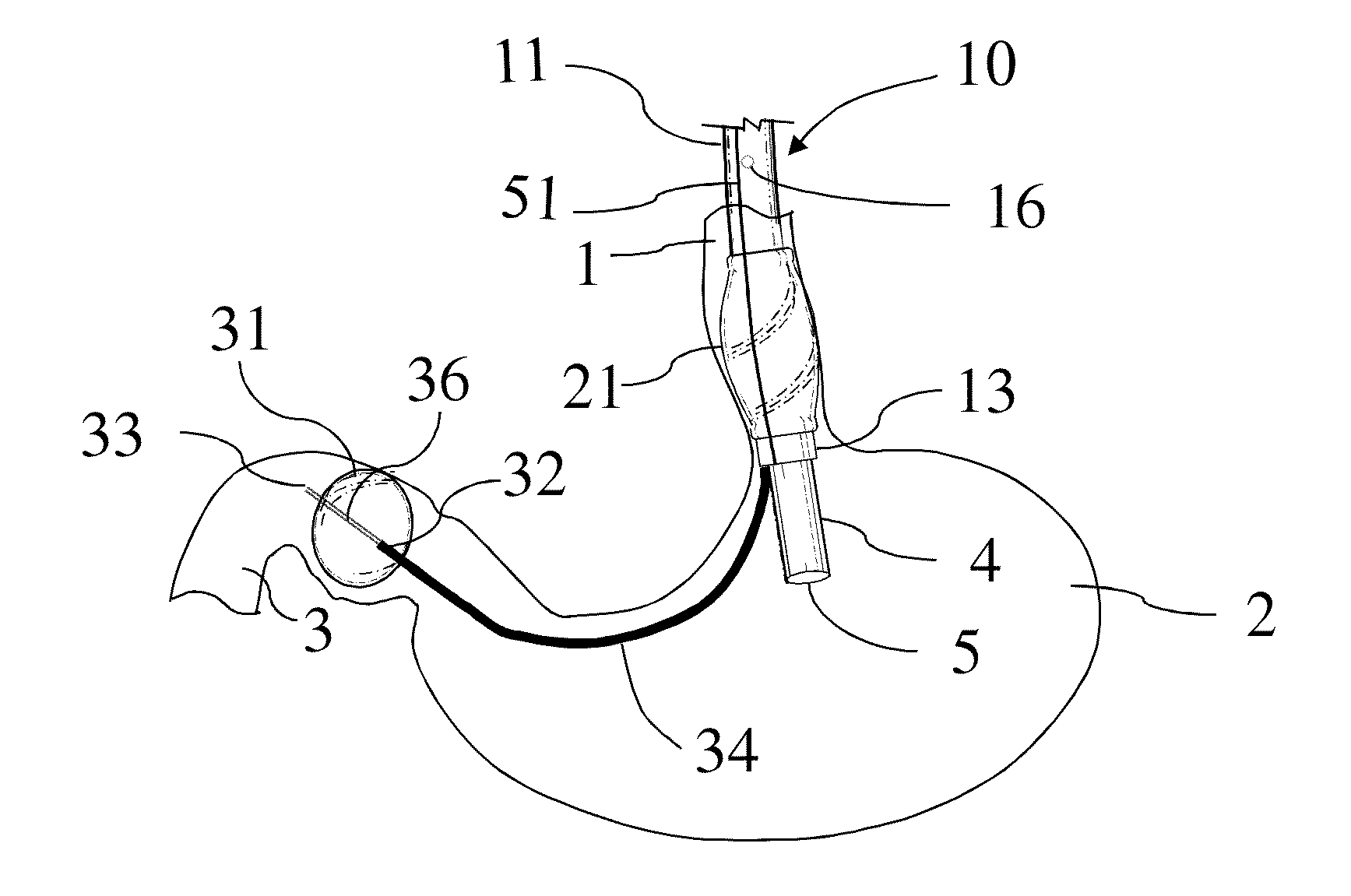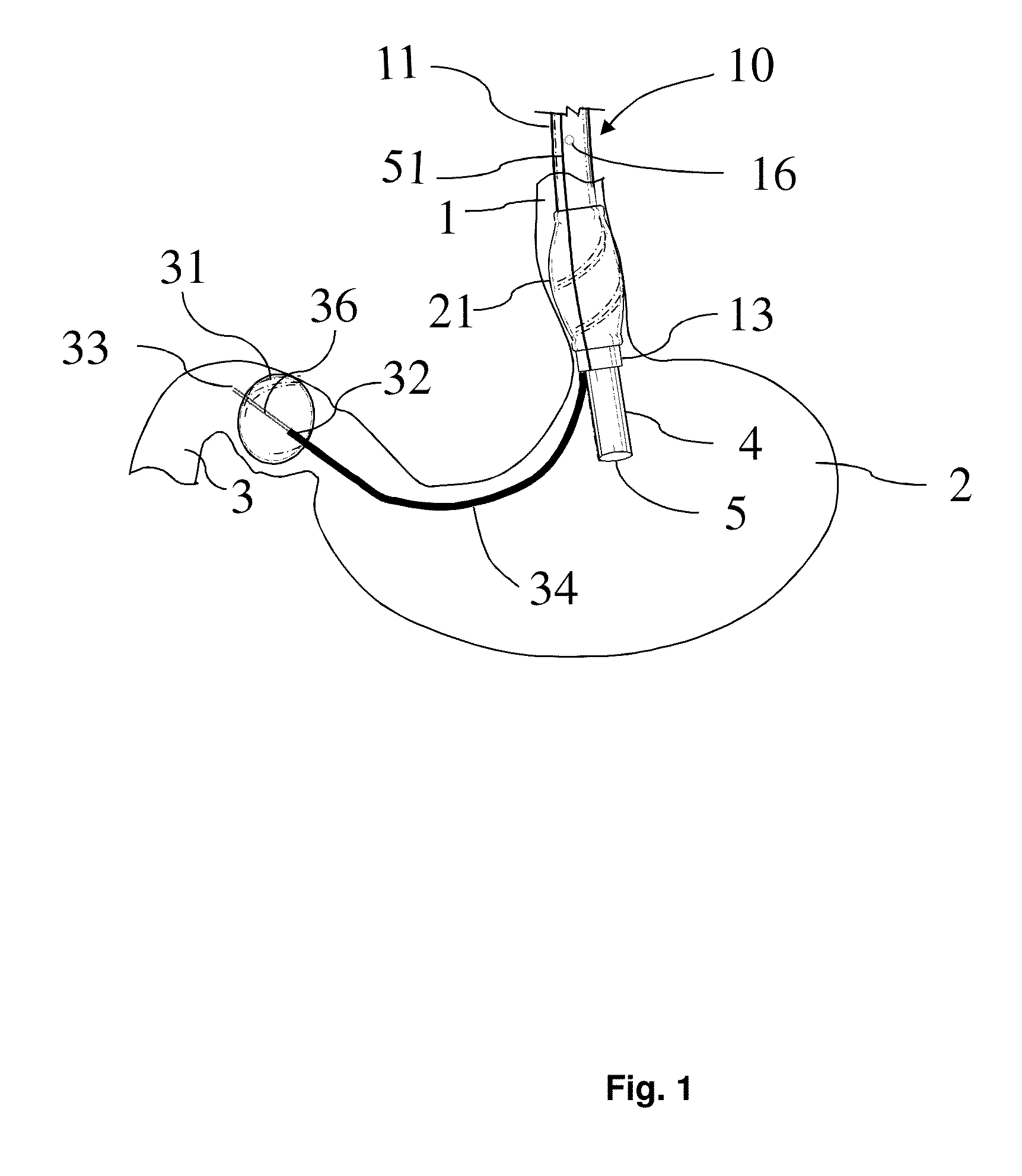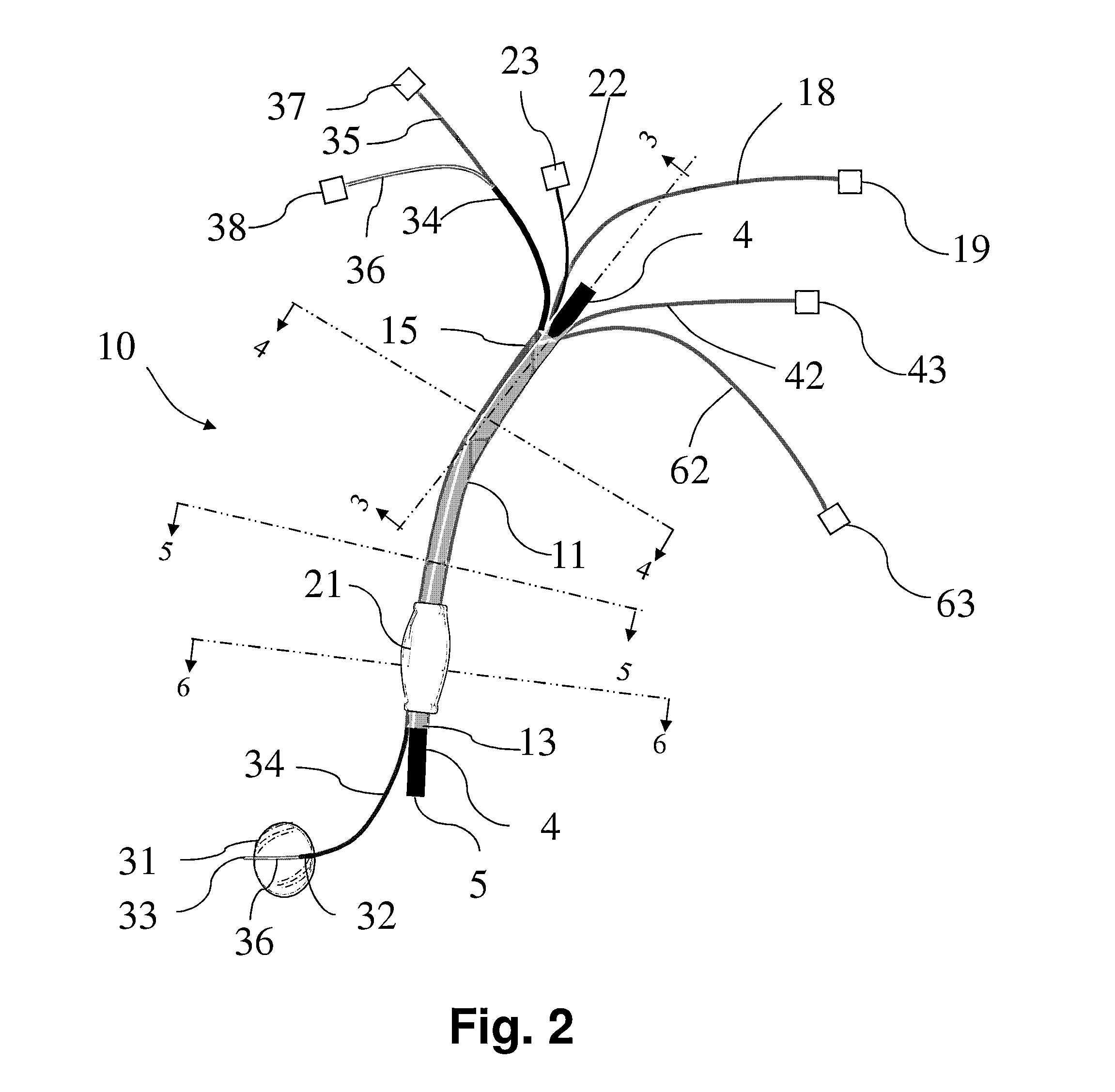Endoscope Accessory
a technology for endoscopes and accessories, applied in the field of endoscope accessories, can solve the problems of poor image quality, inability to create a liquid tight space at the end of the overtube, and the hammer obtaining ultrasonic images, and achieve the effect of enhancing the capabilities of the endoscope in maintaining luminal view
- Summary
- Abstract
- Description
- Claims
- Application Information
AI Technical Summary
Benefits of technology
Problems solved by technology
Method used
Image
Examples
Embodiment Construction
[0021]Endoscope Accessory 10 is made up of these components:
[0022]A—Overtube: As it is depicted in FIGS. 1 and 2, the endoscope accessory 10 is composed of a flexible overtube 11 that can be removably placed over a regular endoscope or echoendoscope shaft 4 and inserted inside a human body cavity such as gastrointestinal tract. The overtube has a proximal endportion 15 and a distal endportion 13. The endoscope tip 5 extends beyond the overtube distal endportion 13 within the body cavity (FIG. 1) for detailed examination of the body cavity. The overtube 11 has an optional longitudinal seam 51 along its entire length that allows opening of the overtube 11 along its entire length for placing an endoscope shaft 4 within the overtube 11 without the need for passing the endoscope through the overtube proximal endportion 15. Longitudinal seam 51 (FIGS. 1 & 7) can reversibly open and close using an interlocking closure mechanism at opposed adjacent edge portions 12 and 14. The interlocking ...
PUM
 Login to View More
Login to View More Abstract
Description
Claims
Application Information
 Login to View More
Login to View More - R&D
- Intellectual Property
- Life Sciences
- Materials
- Tech Scout
- Unparalleled Data Quality
- Higher Quality Content
- 60% Fewer Hallucinations
Browse by: Latest US Patents, China's latest patents, Technical Efficacy Thesaurus, Application Domain, Technology Topic, Popular Technical Reports.
© 2025 PatSnap. All rights reserved.Legal|Privacy policy|Modern Slavery Act Transparency Statement|Sitemap|About US| Contact US: help@patsnap.com



